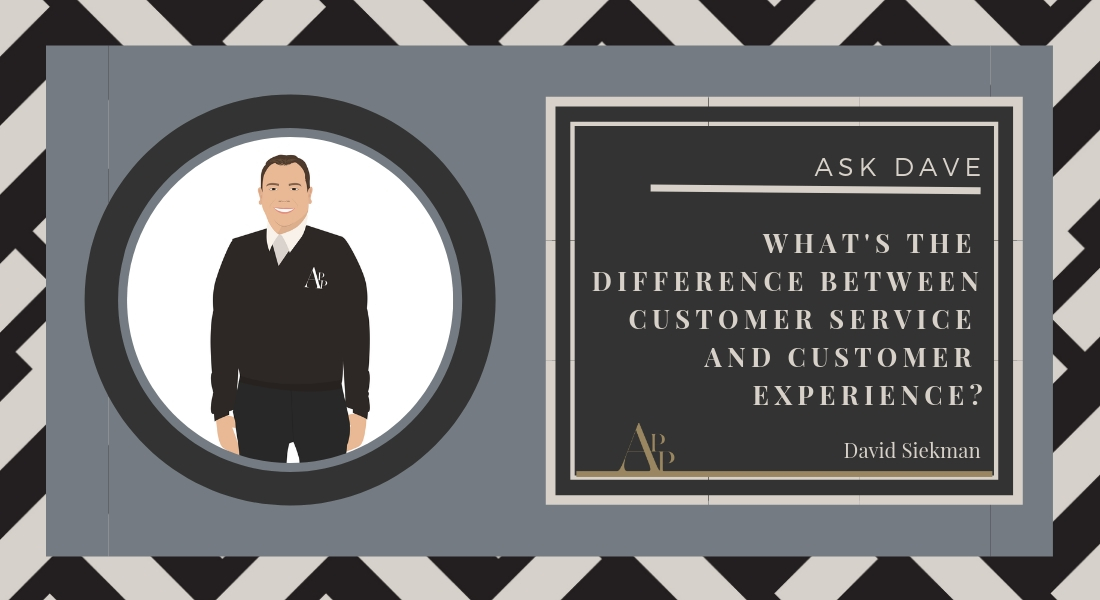Much of what we discuss with agents around the United States and Canada is focused on Customer Experience and how we can improve our clients’ experience with our agency. As we use this newer term, I am often asked about the difference between Customer Experience and Customer Service.
Over the years, many of us have transitioned away from using the term “customer” and instead use the term “client.” This is a small, but great example of the shift from customer service to customer (or perhaps we should use the term “client”) experience. Customers typically need something specific and are looking for us to provide it. A client is someone to whom we are looking to provide a full range of services, regardless of what they may be asking about at a particular time.
Perhaps most simply put, customer service is reactively responding to and resolving an issue, whereas customer experience is a higher level effort at providing the client with everything they need. This is not to downplay the role of customer service. This is still a vital component of providing good service and retaining clients. We need to be there to answer billing questions, help with claims, or resolve other inbound client issues. Providing a good client experience is simply doing more.
When we are looking at setting up a process or procedure, we should be taking a customer experience approach. Instead of just defining the specific steps that should be followed to resolve the client’s immediate need, we should make sure we are taking into consideration additional points that have value.
Let’s look at a simple example. A client calls in confused over their bill. A customer service approach may be:
- Answer the phone
- Figure out the problem
- Figure out the solution
- Let the client know
This is good customer service. The client had a question on their bill. We were able to solve the client’s issue for them. Question asked. Question answered.
Let’s take a look at the same issue from a customer experience perspective:
- We are going to answer the phone with the same consistent message and an upbeat tone of voice.
- Determine if the client wants to get directly into the issue, or if some rapport building questions match the caller’s personality type.
- Listen to the client explain the issue. Do not interrupt, even if things may be incorrect or unclear. After the client has finished, follow up with questions to help clarify where you were unclear and provide details to inform on items where the client may be misinformed.
- If the client gets upset, follow our “How to Help Upset Callers” process.
- Be sure to verify contact information before proceeding.
- Determine if you can resolve the issue on the first call. This is our ideal process. If you are unable to resolve on the first call, set a specific day and time expectation as to when you will have a solution. Be clear on the steps you will be taking to resolve the issue; include if you are dependent on speaking with a party who may be unavailable (underwriter for example).
- Be sure to contact the client back at the specified time even if a solution has not been identified.
- Always explain the next steps that need to be taken by both you and the client along with a specific time frame for expected completion.
- Determine additional coverages that should be discussed. Every inbound call should have an offer to review their account to identify if there are low or missing coverages, missing discounts, or any other opportunity to increase coverage or save the client money (deductibles, billing plans, etc.).
- Upon resolution of the call:
- Sincerely thank the caller for their business.
- Be sure to take any necessary actions and follow up as necessary.
- Email the client using the “Issue Solved” email template which includes a link to our client service survey.
As you can see, the difference between simply solving the problem and creating a whole experience is drastically different. Think of the difference between going to a traveling carnival and Disney World. There are rides at both, but one is clearly more of an experience!
When building your customer experience, there are occasionally conflicts that can arise between the customer experience you wish to provide and customer service. Often this needs to be resolved by looking at what is good for the most people versus a specific individual. An overly dramatic example would be to look at the effect of taking 2 hours to help a client with a reinstatement versus all of the other clients who didn’t get service at that time.
This conflict often arises when I try to book specific times with clients. Booking specific times has a lot of tremendous values, but it can create issues when I’m working on an issue with a different client and I’m getting close to missing a promised call. If I have a client calling in at 1:55 but a booked call at 2:00, ultimately I can’t service them both the way I’d prefer. Prioritizing these two clients and doing the best for both of them is paramount in driving that positive customer experience. If I don’t pick up the inbound call and it goes to voicemail, that isn’t a great experience for the client. If I pick up that call and resolve it on the first call but miss my 2:00, that isn’t a great experience for my 2:00. If I pick up my 1:55, explain that I have a 2:00 appointment, quickly understand the issue and promise a return phone call at 3:00, I’m providing the best experience I can for both clients given the circumstances. Nothing we do in this world will be 100%. Prioritizing our tasks and managing our time is a key piece to providing a good customer experience.
All of our programs are built with a focus on Customer Experience. In particular, our AppX Retention program takes this idea to a whole other level, creating a proactive process to dramatically separate us from our competition. Creating this separation is the ultimate point of providing the experience. If we are providing an experience that is unmatched, it will directly improve both retention as well as sales opportunities.




